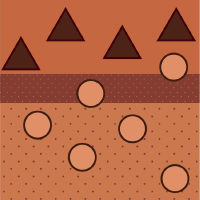Topic Menu
► Topic MenuTopic Editors



Inorganic Thin Film Materials
Topic Information
Dear Colleagues,
In the last decades, films have gained great interest from the scientific community in a wide range of applications. The main objectives of the use of films are to preserve the underlying materials and to overcome the intrinsic limitations of the substrates, also by implementing new functional properties of the surfaces. Both aspects are crucial in almost all the modern applications and technologies. Therefore, coatings have been applied to bulk materials for years, and are still the subject of intensive research, in order to improve their properties even more, reducing production costs. As global energy demand is set to grow rapidly in the coming years, accompanied by increases and volatility in energy prices, energy efficiency as a useful strategy to manage rising costs, and the use of alternative/renewable energy sources will increasingly be important vectors in the future energy systems. In this context, films can play a leading role in the development of more sustainable and efficient products and devices, as regards the conversion and storage of energy, and energy consumption due to damage, malfunctions and poor efficiency related to wear, corrosion and thermal/mechanical cycling. In this Topic, we solicit the submission of manuscripts on growth and characterization of inorganic films, with a special focus on energy storage, harvesting, efficiency applications and sustainability. Last but not least, advances in the field of low environmental impact technologies and eco-friendly materials will be appreciated.
Dr. Cecilia Mortalò
Dr. Silvia Maria Deambrosis
Dr. Valentina Zin
Topic Editors
Keywords
- inorganic thin films
- energy efficiency
- sustainability
- deposition technique
- characterization
Participating Journals
| Journal Name | Impact Factor | CiteScore | Launched Year | First Decision (median) | APC |
|---|---|---|---|---|---|

Coatings
|
3.4 | 4.7 | 2011 | 13.8 Days | CHF 2600 |

Materials
|
3.4 | 5.2 | 2008 | 13.9 Days | CHF 2600 |

Membranes
|
4.2 | 4.4 | 2011 | 13.6 Days | CHF 2700 |

MDPI Topics is cooperating with Preprints.org and has built a direct connection between MDPI journals and Preprints.org. Authors are encouraged to enjoy the benefits by posting a preprint at Preprints.org prior to publication:
- Immediately share your ideas ahead of publication and establish your research priority;
- Protect your idea from being stolen with this time-stamped preprint article;
- Enhance the exposure and impact of your research;
- Receive feedback from your peers in advance;
- Have it indexed in Web of Science (Preprint Citation Index), Google Scholar, Crossref, SHARE, PrePubMed, Scilit and Europe PMC.

